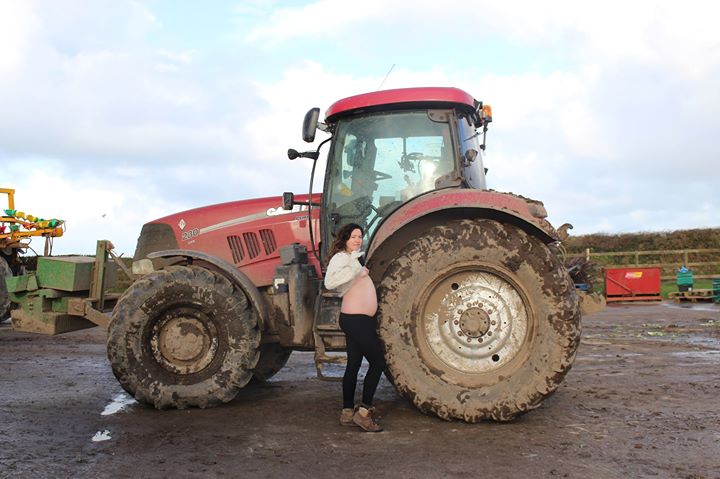|
|
| home | exhibitions | interviews | features | profiles | webprojects | archive |
|
Between Fog, Rocks and Poldark Nina Royle
If a periphery denotes the outer limit of an area, then taken literally, I’m writing from the periphery. Beyond St Just lie cliffs and sea. The word periphery suggests marginality. I don’t think of here as marginal though. The landscape feels too powerful, with its own character and dynamic that rubs-off on the art scene. Even Tate St Ives is not exempt, with sand trodden through its galleries. I was based in London for eleven years. Compared to that experience, I see where I live now as a space that intensifies issues connected to being a practising artist. In broad strokes, this article articulates some of those pros and cons.
Lucy Stein (image below) - artist, friend, housemate and sometimes collaborator, makes paintings and performances that channel a feminist voice through a stance drawing on both Celtic and neo-pagan sensibilities. Her work conveys an 'on- edge' unruliness that fits this land. It’s why she’s here. In response to my questioning her about the word periphery and basing her practise in St Just, she hit back that Cornwall is phallus shaped. It’s more an extreme appendage on England that takes time to reach and leave than a periphery. To base a practice here that seeks to maintain dialogues with a wider art-world in Lucy’s opinion, is not a marginal life-decision. It’s one in conflict with a dominant perception that deems where an art world exists and where its most relevant conversations occur, to be largely the product of cities. Again referencing this landscape, a dynamic of power and the word extreme entered discussion with the artist Libita Clayton, on a two-day walk we made tracing Penwith’s coastline. Libita is now Bristol-based but like me she grew up here. The walk we made was contributing to research for an upcoming exhibition in the project space at Gasworks in London. It will probe her Namibian-Cornish heritage, prompting difficult questions about systemic racism in Britain and its colonial roots. Her description of Penwith’s landscape, on one hand relates to the aweing geography here, which has fascinated countless artists. On the other hand it voices the dynamics experienced growing up as a person of colour in a predominantly white community. On the borders of the UK, my sense is issues like this concentrate. Whilst the art scene in Cornwall is rich, there is much more ground to make for welcoming conversations like this. Simon Bayliss’ work, which centres on identifying as queer in a rural setting, instigates a similar but different conversation. Simon terms the various avenues his work assumes as ‘rural pursuits.’ His current solo show, supported by the South West Showcase and hosted by Plymouth College of Art, includes plein-air painting, slipware ceramics (in pasty shapes), romantic poetry, film and music inspired by rave culture. It ironically conveys common tensions felt here, between the fruitful pleasures of country escape, then escape to a place that leaves you cast out on a limb.
The place most integral to shaping my experience as an artist here is the Cornubian Arts and Science Trust (CAST) in Helston, where my studio is based. Housed in a former school and directed by Teresa Gleadowe, CAST incorporates artist’s studios, a café and residency programme for students at Falmouth University. It also runs a broad series of events that support interdisciplinary dialogues between the arts and sciences. The artist Ben Sanderson, who has been involved with CAST since its start, reminds me how five years ago the building was near dereliction. Bit by bit it is being renovated and with this progression, new opportunities open. More room for dialogue - more space to bring local, national and international artists together. In a place where artists are scattered between homes isolated by long drives, having a platform like this is a lifeline. Culminating this summer, Teresa has also been curating Groundwork, an ambitious programme of contemporary art, hosted in various sites – indoors and outdoors across Cornwall. The central ethos of Groundwork centred on bringing work by internationally celebrated artists to Cornwall. Enabling local engagement with this art and creating situations where the not from here is coloured by here. ‘Where it is, There it is....’ was one exhibition towards its finish, held in the Auction House , a new project space in Redruth run by artist Liam Jolly. It brought together participants from a series of discursive residencies called the Cornwall Workshop, run for the last four years. The content of the exhibition was formed through participants describing their process of making work, in relation to the words ‘where it is, there it is’. This was a phrase used by local miners prospecting for tin. Re-appropriated, it was a succinct way to extend dialogues started in the original workshops about the haphazard nature of making, whilst relating that discussion to the context of Cornwall. Before the mining industry crumbled, Redruth was one of the richest towns in Europe - a fact hard to imagine now. The exhibition highlighted for me that peripheries and where we perceive them to lie, are haphazard and always subject to change.
originally written for 'artlicks magazine' - summer 2018 15.10.18 |
|
|

720.jpg)
